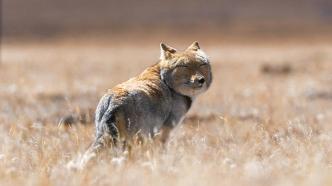
On April 22, Earth Day, the 14th Beijing International Film Festival and the 31st College Student Film Festival "Environmental Images: From Recording to Inspiration" forum was held in Beijing. The "Rediscovery Plan" environmental image collection activity, which aims to inspire young students to pay attention to natural ecology and enhance environmental awareness, was also officially launched at this forum.
The participants agreed that the integration of film and television is very important for promoting the new quality productivity of film and television, especially the cross-border exchanges with multiple topics such as environmental protection, which can enhance the influence of image content. According to reports, the special unit of environmental protection images of the Beijing University Student Film Festival "Rediscovery Plan" will call on young lenses to convey their concern for environmental protection and sustainable development, tell environmental protection stories with vivid and lively image language, let green lenses illuminate the ecological glimmer, and jointly light up the sustainable future of the earth.

Group photo of guests
The origin of the development of documentaries is ecological and natural documentaries
In the first topic of the forum, "Green Lens, Using Images to Speak for Environmental Protection", Guo Yonghao, the producer of the documentary "Snow Leopard and Her Friends", spoke first.

"Green Lens, Using Images to Speak for Environmental Protection" Guests
In his opinion, the shooting of natural images has a certain peculiarity, which is its presence. "We shoot ten times, but the photographer may not be able to capture what we want to shoot. And shooting natural images is actually a blank subject in China. Many creations that are made to suit the occasion often end up being promotional films with the theme first, because the availability of materials is very poor. The best way to solve the problem of presence is local training. It can be said that "Snow Leopard and Her Friends" opened a starting point for this working model."
“Young students, if you want to pursue a career in nature photography in the future, you should pay attention to the following three points: First, no matter what major you study, you have to be a scientist and know where the boundaries of the physical world are. This includes the performance of the machine you have, the habits of all species, and their distribution, so that you can make accurate predictions; secondly, you have to be an artist, and aesthetic literacy can subtly play a key guiding role in your creation; finally, you should be a practitioner who can see the suffering of mankind and the world, so that the works you shoot will have power,” said Guo Yonghao.
In his speech, Nanji, the producer of the film "Snow Leopard", first paid tribute to the director Wangma Caidan who passed away last year, and emphasized that a sincere and positive story is the killer move for producers. "The film was shot in Sanjiangyuan, an uninhabited area with an altitude of more than 5,000 meters. This beautiful and holy place is also the habitat of snow leopards. We started shooting in October, and the local temperature was more than 20 degrees below zero Celsius. In such extremely cold conditions, after more than a month of shooting, green grass actually grew inside and outside the tent we set up, which surprised everyone. Humans and nature have always coexisted. We protect nature, and nature also heals us."
Documentary director Shi Zheyu believes that a good video work is both a mirror that can reflect the world and a hammer that can change the world. "The source of the development of world documentaries is ecological and natural documentaries. Even the English word documentary comes from ecological and natural films. In 1922, the first documentary in the true sense, Nanook of the North, was written and directed by Robert Flaherty. He filmed the daily life of an Eskimo family, showing their trading with white people, fishing, hunting walruses and seals, cooking on stoves, and building igloos. It shows the classic theme of how humans can help each other in a harsh natural environment and coexist harmoniously with nature."
"It's the same in China. In the 1980s and 1990s, most of our earliest documentaries that attracted worldwide attention were about ecology and nature. In 1992, "The Last Mountain God" directed by Sun Zengtian was China's first internationally awarded documentary. It tells the story of how Meng Jinfu and his family, members of the Oroqen ethnic group in the Greater Khingan Range, gave up their generations of mountain life and moved to the city in the face of drastic changes," said Shi Zheyu. In his opinion, it takes perseverance to make a good documentary about nature, because the creation cycle often takes several years. "For example, if we want to shoot a certain animal, it takes a lot of time just to make it adapt to the camera lens dozens of meters away. Only when it really adapts to the surrounding existence can the biological behavior it exhibits be natural and real."
Environmental protection themes should also tell good movie stories
The second topic of the forum, "Ecological Glimmers: Gathering the Power of Action", was discussed by Qian Haiying, curator of the Banff Mountain Film Festival and International Ocean Film, Chen Chen, director of marine documentary and director of Shenzhen Oasis Environmental Protection Public Welfare Promotion Center, and Yang Xu, director of Alxa SEE Ecological Association.

Guests attending the "Ecological Glimmer: Gathering the Power of Action"
Qian Haiying shared her experience in promoting outdoor activities and nature documentaries in China. She observed that the number of documentaries that are becoming cinematic is increasing, and emphasized the importance of storytelling in environmental films. "There is a documentary called "Song of the Whales" at this year's Beijing Film Festival. The 'song' of whales sounds like electronic music, but each track is actually the original soundtrack of whales in the ocean. In the film, there is a scientist who has been engaged in research and protection of whales for more than 30 years. He talked about a time when he was diving and found that two whales had been chasing him and were very close to him. It was not until he boarded the boat that he discovered that there was a shark swimming nearby. He has protected whales for so many years, and at that moment he felt that the whales were also protecting him. Such a real and touching story presented in a documentary will undoubtedly move the audience more."
Chen Chen talked about his experience of becoming a documentary director and how he received support from the Alxa SEE Ecological Association in terms of project funding when he started filming "Searching for the Coral Sea". "Searching for the Coral Sea records the organizations and individuals who are conserving corals on the seabed in the context of global warming. In 2019, the crew came to the Philippines, and I interviewed a local old man who was nearly 60 years old. He led a group of fishermen to plant millions of corals all over the seabed. In his opinion, the ocean provides a lot of oxygen to the land, and they plant corals on the seabed as a way of feeding back to the marine fishery." Chen Chen said that his next filming plan is to explore the ancient marine world based on the "Haicuo Tu" in the Forbidden City and initiate a protection plan, and the project has been shortlisted for the French Sunshine International Documentary Festival.
During the question-and-answer session, a student audience member asked the guests how to effectively enhance the appeal of the film content for the work he was about to submit to the "Rediscovery Project" unit. In this regard, Chen Chen suggested that the questioner dig into the story through data collection and field interviews to enhance the details of the story and build a way for the film to resonate with the audience. Qian Haiying suggested that the questioner delve into life and find emotions and stories that can touch himself and the team, so as to better attract the audience.


